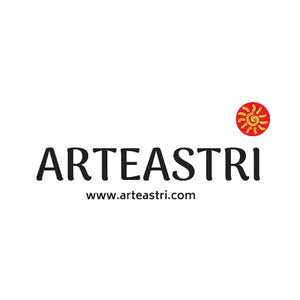Dhokra Jewellery
Let’s take you back 4000 years to an ancient non-ferrous metal-casting technique -Dhokra. Dhokra or Dokra craft as it is popularly known is easily one of the earliest and most advanced methods of metal casting known to human civilization. This ancient folk art tradition is native to the metal-rich states of Eastern India, primarily, Chhattisgarh, Bengal, Orissa. The Dancing Girl statue dating back to the Harappan Civilisation is one of the earliest known examples of Dokra Craft. Dokra is named after the Dokra Damar nomadic tribes , the metal-workers of Bastar, Chhattisgarh. Today, this tribe also resides in areas of Jharkhand, West Bengal and Orissa. In Bengal, the tribal belts in Purulia, Bankura, Burdwan, Medinipore produce Dokra.
The process of making Dokra is highly sustainable using only natural raw materials. The primary raw material is brass which is collected from brass scrap or used brass utensils. The next step is making a mould from locally sourced clay/mud. The mud is mixed with rice husk or even animal waste like cowdung. This is to avoid the clay mould from breaking while drying. The artisans are talented enough to make the first basic model of the jewellery or artefact with their bare hands which is then air dried naturally till fully hardened. After drying, the mould is filed with sand paper to give finesse to the shape. A very thin semi-liquid layer of clay is then applied over the model to smoothen the coarse surface. The next step is heating frankincense, wax and oil in a pot until the mixture gets liquified. The density and concentration of this liquid is checked during the heating process. This liquid should be of pouring consistency which is then sieved through a piece of cloth to remove any impurities. The obtained wax is then used to extricate the thread of wax which are then used for decoration purpose. Strips of bees wax and resin are applied on the mould in a particular design to decorate the product. After the designing stage, the mould is is covered with a thick coating of clay and is baked in a furnace. During this baking process, the wax burns leaving channels for the free flow of molten metal. The molten metal derived after heating scraps of brass is then poured into these channels and left to cool and harden. After cooling, the mould is broken and the cast figures are released. The final product is brightened by rubbing it hard with clean sand. Unique feature of Dokra art is that no two pieces are identical.
We are so proud to have met a national award winning Dokra artisan in West Bengal who has crafted most of our stunning and unique pieces of Dhokra Jewellery now available on our website.



Image: A Dokra Village in Bankura, West Bengal. Our artisan.
The rusty look in Arteastri Dhokra jewellery is what adds beauty and charm to each piece. Our Dhokra Jewellery always stands out among all other ornaments and is a unique gift that also makes for a perfect present. Head over to Arteastri’s Dhokra jewellery collection page to find handmade tribal jewellery that warms your soul. We guarantee that you will find many!
#Jewellery #Ancient #Culture #Dhokra Jewellery #Bangalore #Delhi #ChristmasGifts #Giftsforher #Fashion #Sustainable
